
8 Email List Management Software And Best Practices [2025]
If you want to capitalize on email marketing’s huge ROI, then you’ll need one of the best email list management solutions out there.
Creating the perfect email template or writing the best content is important, but marketers also need the right tools to manage their contact list more efficiently.
A properly segmented list is an integral part of every email marketing strategy since it allows you to target the right people, personalize your message, and generate leads for your business.
In this blog post, you’ll find the best contact management tools to build, grow, and manage your contact list, along with essential list management best practices to do it like a pro.
The easiest and most affordable email marketing and newsletter software!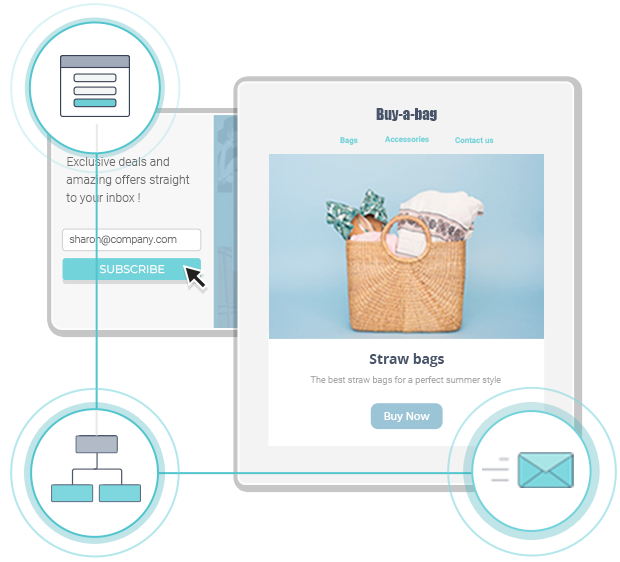
So, let’s dive right into everything!
1. Moosend
Pricing: Paid plans start at $9/month, 30-day free trial – no CC required (Sign up here)
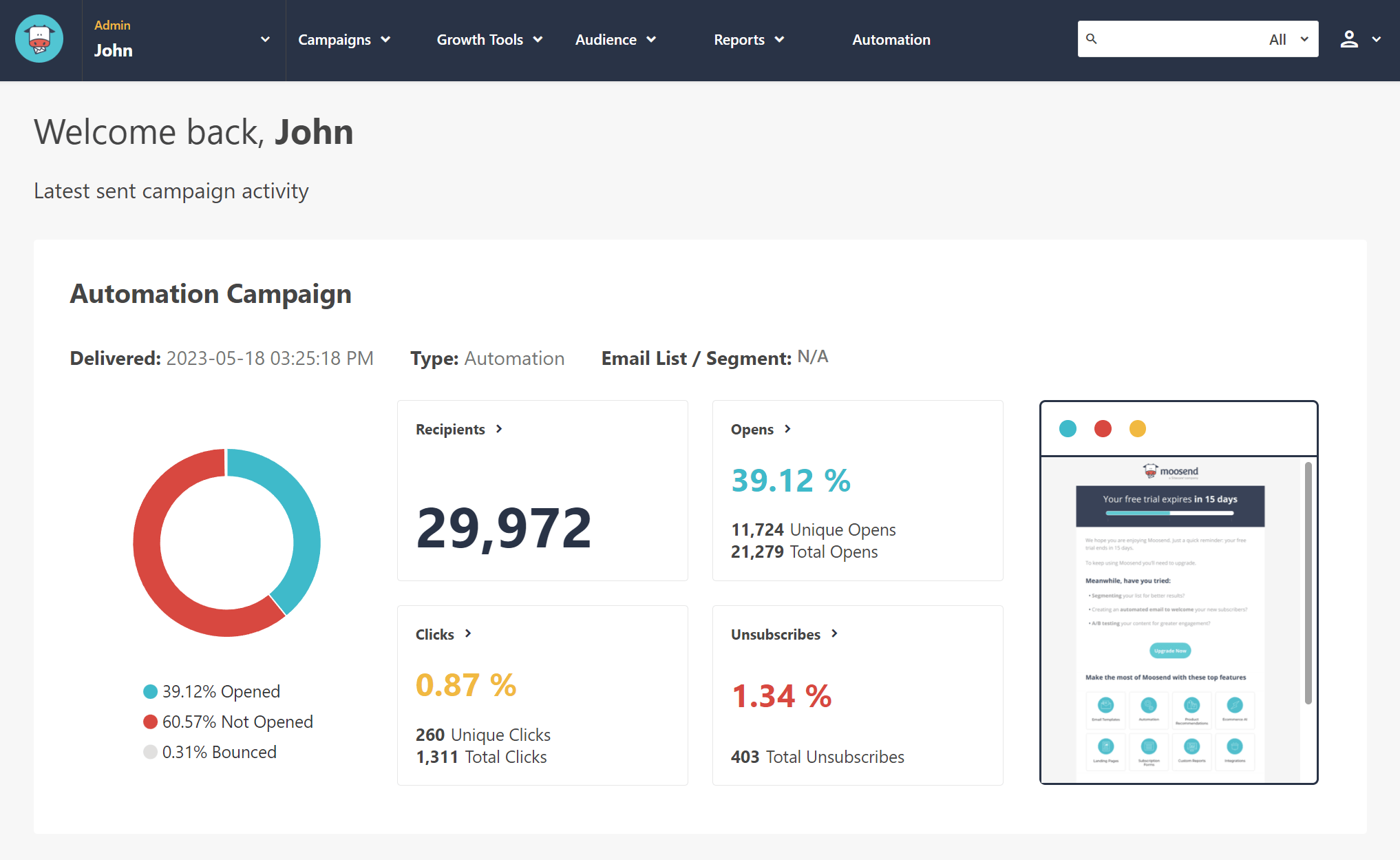
Moosend is a top email marketing platform that lets you not only create and automate your next email campaign but also nail your email list management.
With the platform’s sophisticated list segmentation features, you can create segments based on information collected in the form of custom fields (work like tags) and behavioral data. This way, you can filter your mailing lists and create tailored content for your email subscribers.
What’s more, regarding email deliverability, Moosend has a sender score of 98% to land your messages in your recipients’ inbox and avoid the spam folder. The variety of integrations with email verification tools will also contribute to your list hygiene efforts and provide you with valuable data to manage your contacts more efficiently.
Overall, the platform will help you manage your lists, deliver your messages, and personalize your audience’s experience. You can test Moosend’s list management capabilities when you sign up for a free account.
2. HubSpot
Pricing: Paid plans start at $50/month, free plan
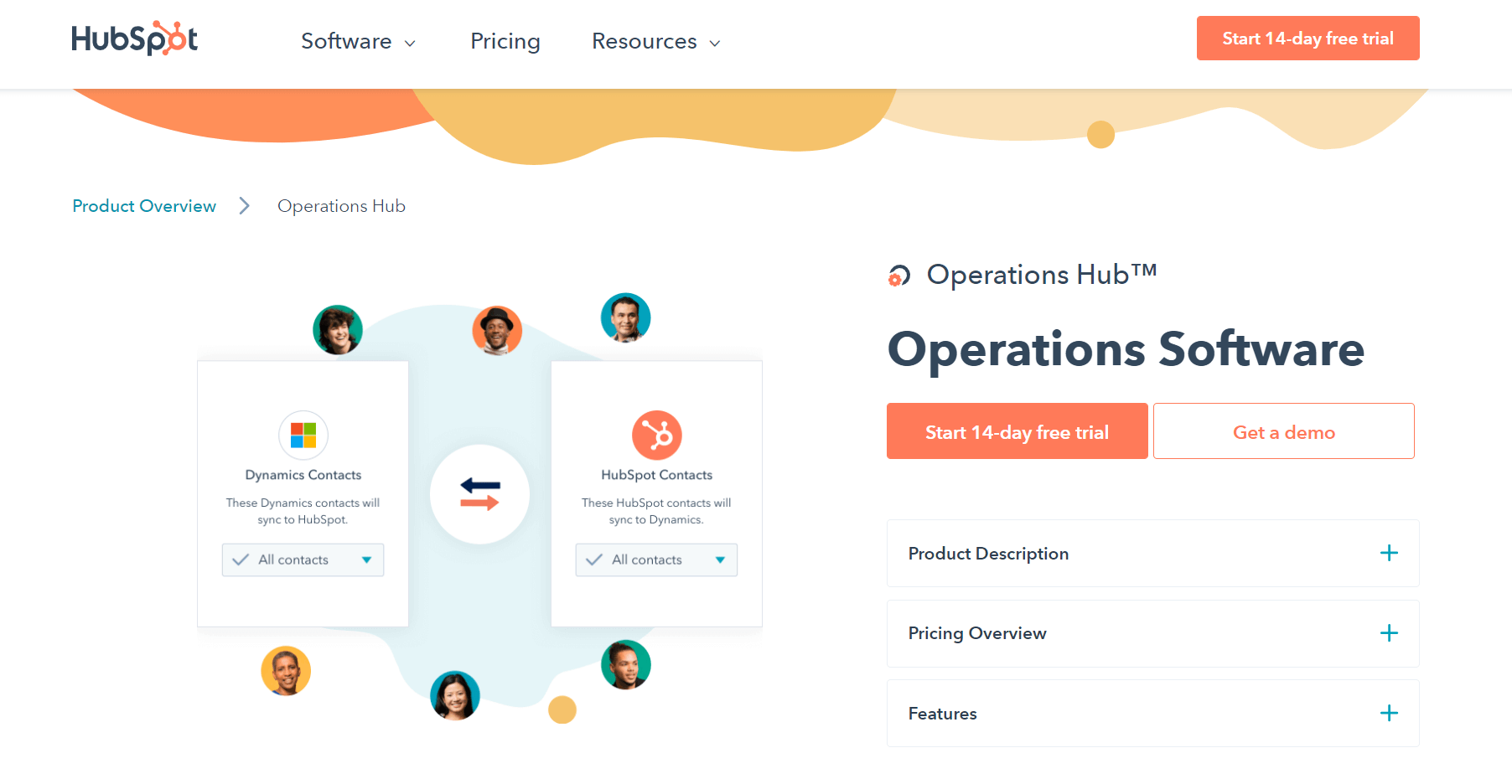
HubSpot is an all-in-one marketing suite with a professional CRM system that allows you to connect with your audience and manage your contacts in a straightforward way. HubSpot has now fully implemented PieSync’s unique technology in its Operations Hub, so customers can benefit from the added functionality plus extra features.
The tool allows marketers to send targeted emails to subscribers in different lifecycle stages, or target them based on additional contact information gathered. Moreover, the email list management software provides two-way data sync between different apps, so you won’t need to worry about your contacts being up-to-date.
Management and growth of your list are easy with HubSpot due to its CRM tool. You can leverage valuable data to create tailored messages that boost your open rates and conversions. The platform also has A/B testing capabilities and rich analytics that help marketers make informed decisions about their marketing campaigns.
Overall, HubSpot is a great solution for businesses looking to cover their mailing list management needs with one comprehensive platform. It’s noteworthy though that the system has a substantial learning curve.
3. Constant Contact
Pricing: Paid plans start at $20/month, 60-day free trial
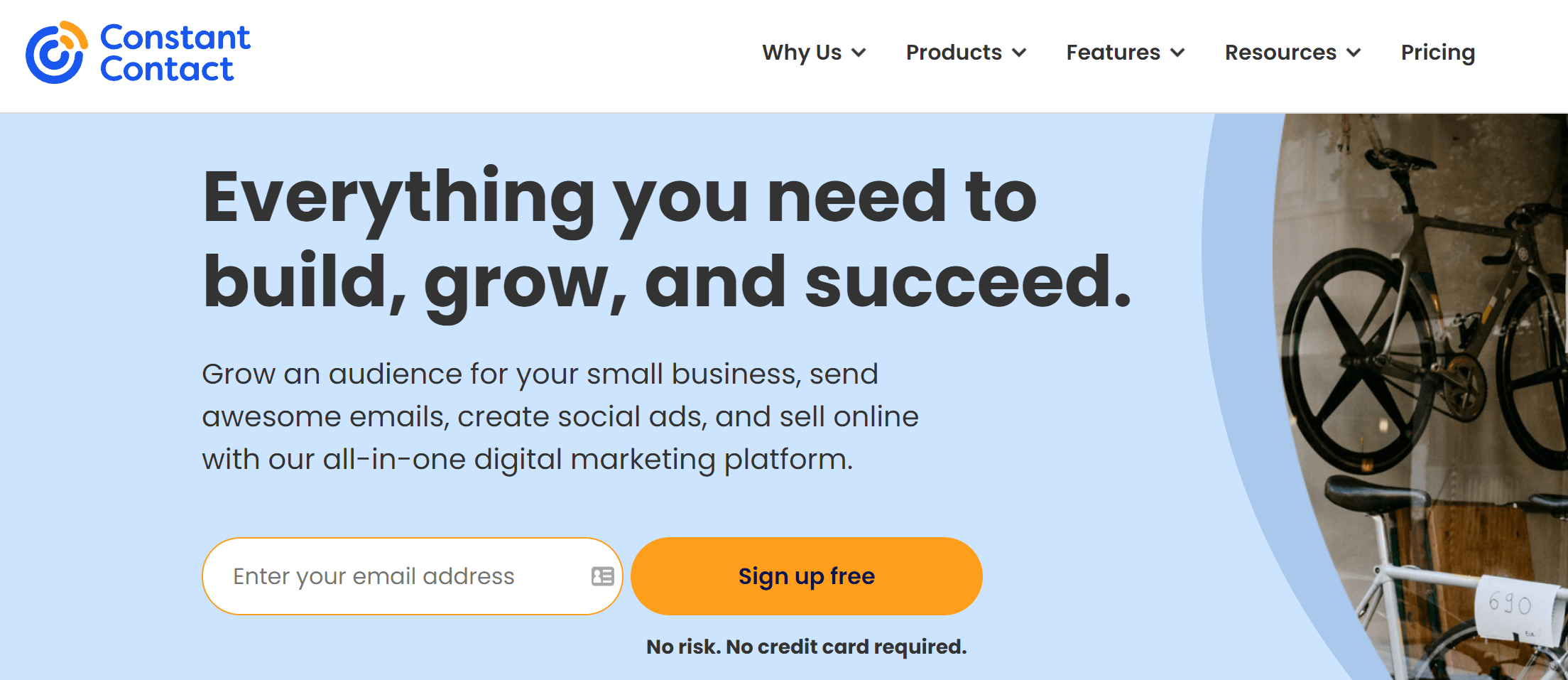
Constant Contact is among the simple email marketing tools you can get to create email newsletters. But what about email list management? Well, the platform offers some useful segmentation features to get you started. Nevertheless, these features are more on the basic side, making Constant Contact great for beginners.
More specifically, the email list manager lets you take advantage of segmentation by searching through contact field values or user actions like their opens and click-throughs. Furthermore, Constant Contact allows you to add your contacts to specific lists or even export and then target them with a relevant email campaign.
Overall, Constant Contact offers some basic list management features to keep your list organized. While it’s great for small businesses with smaller lists, if you have a larger list, you’ll need to consider some of the best Constant Contact alternatives instead.
4. Paperform
Pricing: Paid plans start at $24/month, 14-day free trial
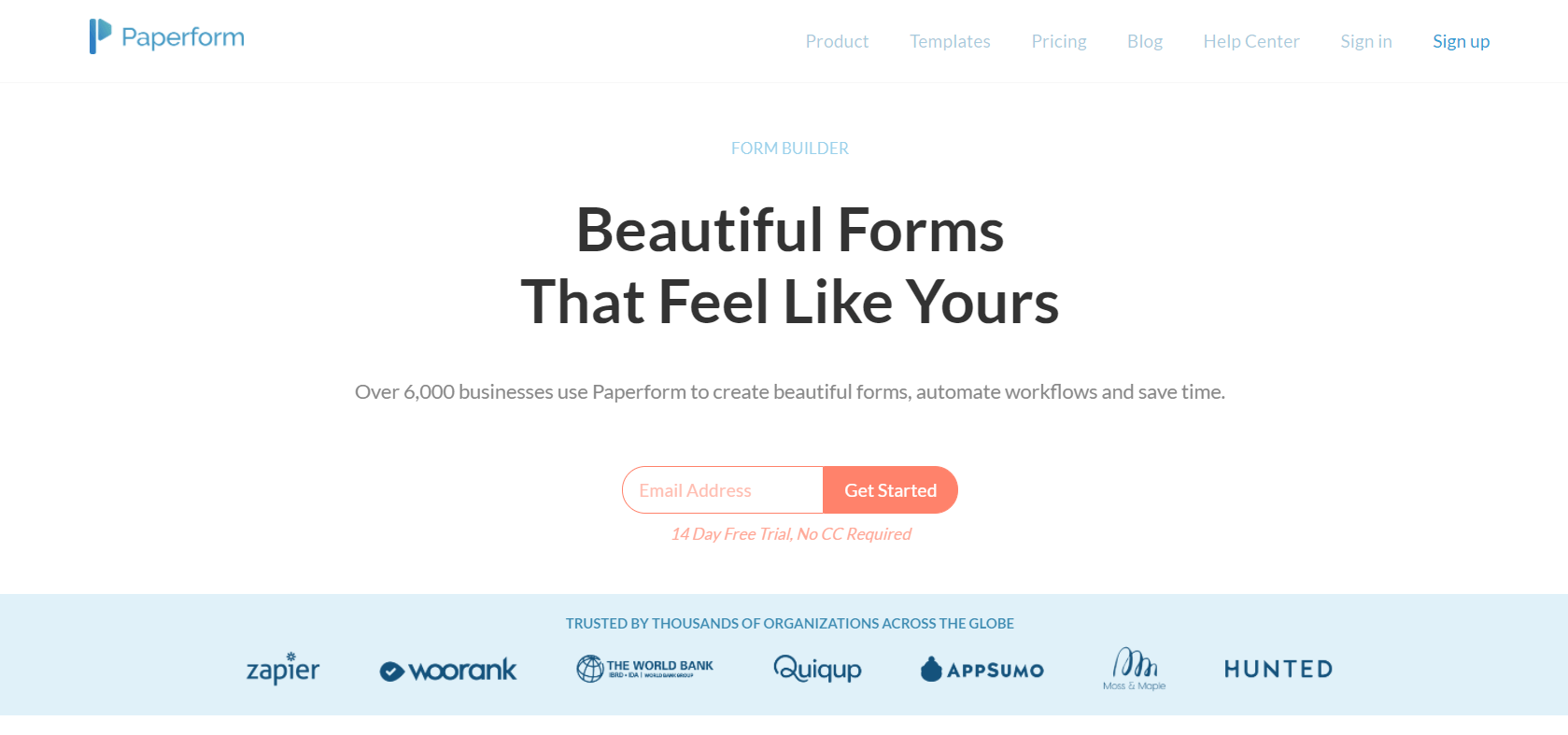
Paperform is a great contact list management tool that enables you to create landing pages and newsletter signup forms to grow your list. The tool has a variety of beautiful templates to capture your leads’ email addresses.
More specifically, you can customize your forms by adding images or videos to make them more attractive. If you are more tech-savvy, the tool also lets you edit the form in HTML and CSS.
With Paperform, you can set logic rules to define when questions, pages, or other elements will be presented to your visitors. Also, embedding forms, sharing them on social media or email, and analyzing the results are very easy to do.
As one of the best online form builder tools in the market, Paperform offers various integrations with popular apps to make list building a lot easier. While the tool will help you create beautiful forms, it still lacks a few customization options.
5. Bouncer
Pricing:Paid plans start at $8 for pay-as-you-go accounts of 1,000 email addresses (or $6 for a monthly subscription)
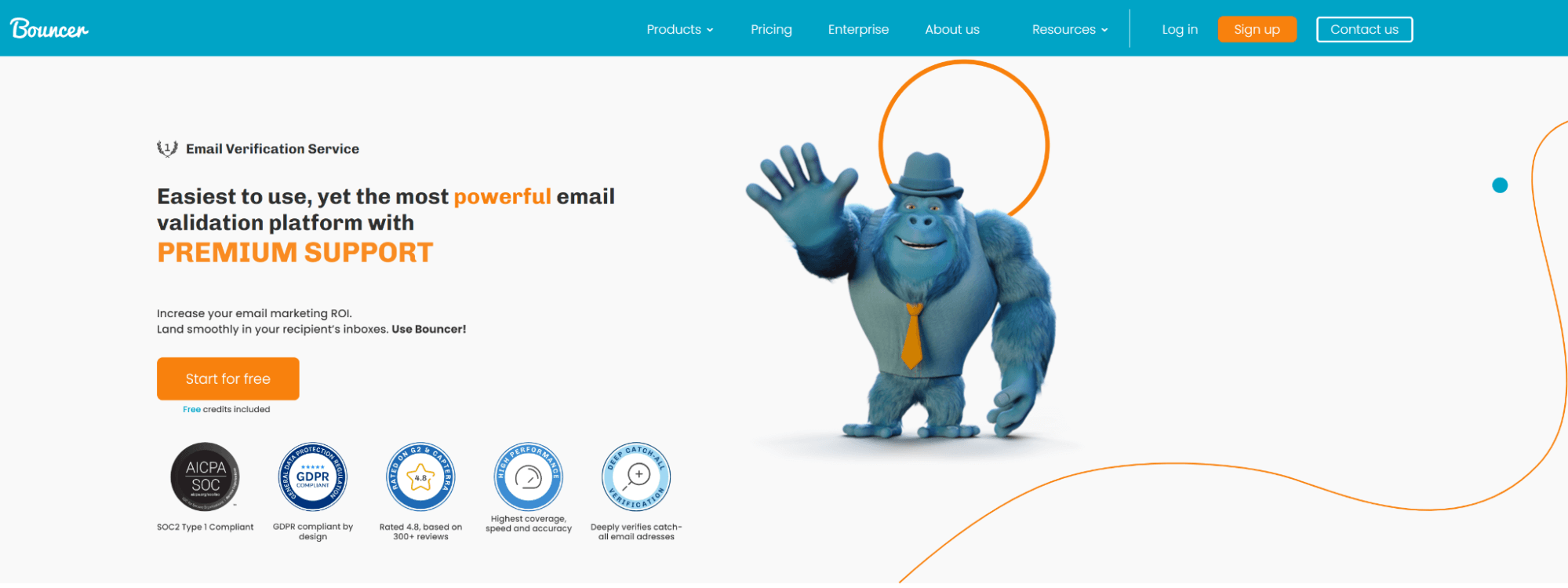
Bouncer is an email verification tool designed to help you maintain high deliverability through a clean email list, no matter how large your database is. With Bouncer, you can detect and remove invalid, risky, or duplicate email addresses and ensure your messages reach real inboxes, improving your overall sender reputation.
One of Bouncer’s core features is the platform’s advanced email verification with real-time API support, and “Bouncer Shield,” a tool that can identify malicious, invalid, or fraudulent emails upon signup.
Beyond basic verification, Bouncer also provides email toxicity checks that can keep your list free of breached emails, known complainer or litigator emails or potential spam traps, and bulk email list cleaning. Its GDPR-compliant processes ensure that your data stays secure.
Overall, Bouncer is a reliable and user-friendly solution that fits seamlessly into your opt-in workflow, helping you maintain a clean and compliant email list and maximize the success of your email marketing efforts.
6. Mailchimp
Pricing: Paid plans start at $20/month, limited free plan

Mailchimp is another popular email marketing software famous for its email campaign types, A/B testing, and RSS campaigns. While the platform is generally easy to use, its email marketing automation features might be difficult to master.
When it comes to email list management, Mailchimp offers great segmentation options that let you combine up to five different conditional relationships. What’s more, the platform gives you access to insights to find specific audience subsets and deliver more personalized emails.
Mailchimp’s segments utilize demographic and behavioral data to group your subscriber list better. To give you a hand, the email service also has some pre-built segments you can instantly use.
The tool’s popularity makes it a great email list management solution. Nevertheless, you should know that Mailchimp’s lists are siloed and, therefore, collective management isn’t possible, unlike other popular Mailchimp alternatives.
7. ActiveCampaign
Pricing: Paid plans start at $15/month, 14-day free trial
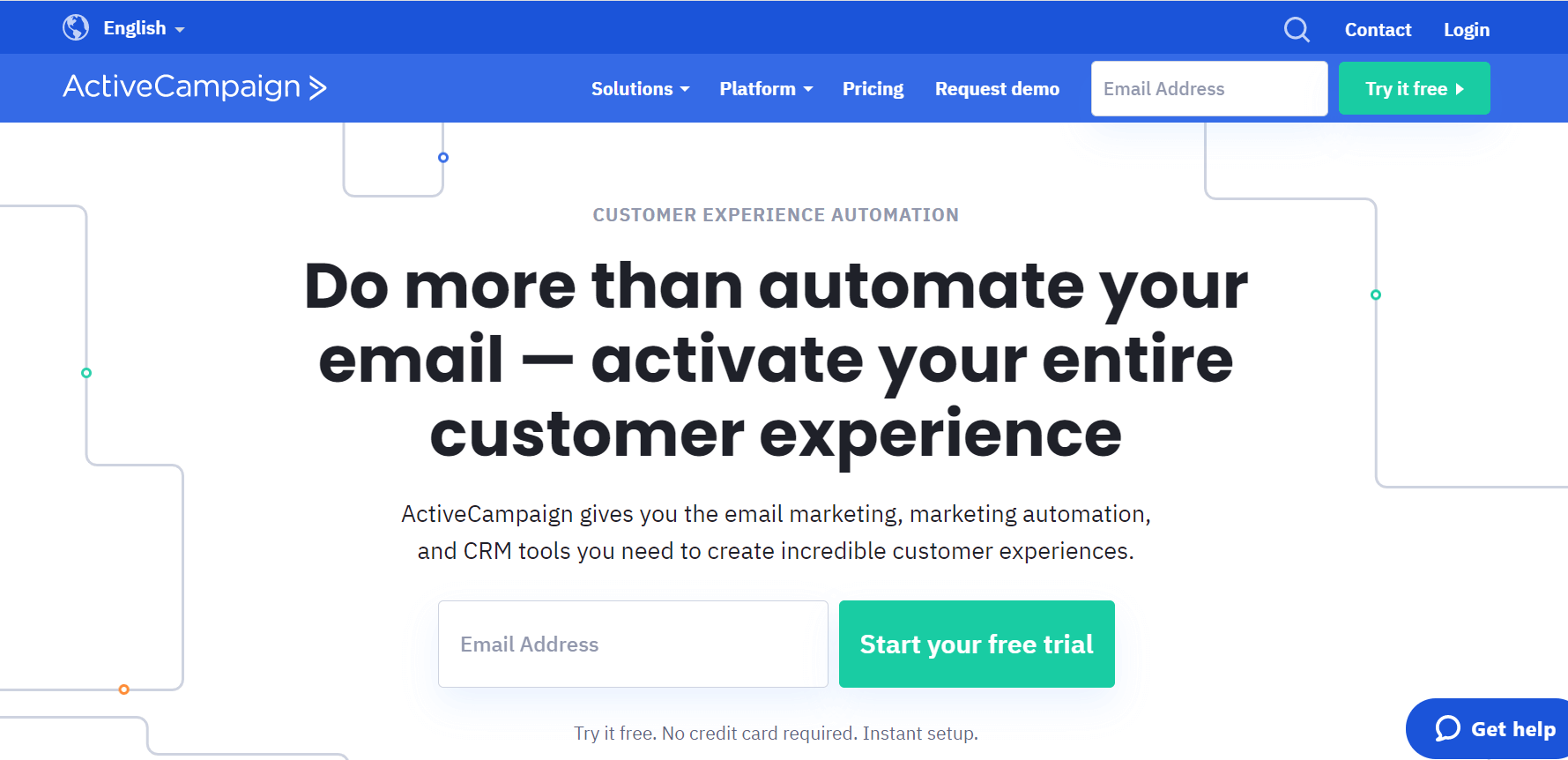
ActiveCampaign is another email management software to power up your digital marketing efforts and get the hang of list management. Nevertheless, the powerful features and complexity might be a little overwhelming for beginners.
When it comes to managing your lists, ActiveCampaign lets you use tags to segment your audience and target them accordingly. Moreover, the service allows you to add tags automatically whenever your visitors take action on your website.
Compared to Mailchimp’s somewhat poor deliverability, ActiveCampaign has a very good score that lands your emails in the inbox of popular email providers like Gmail, Outlook, and Yahoo.
Overall, ActiveCampaign will help you automate your list management efforts. Nevertheless, it might take a bit of extra effort to get used to the advanced features, and you’ll need a paid plan to test its full potential as the trial is very short.
8. Brevo (formerly Sendinblue)
Pricing: Paid plans start at $25/month, limited free plan
 Brevo is among the free email marketing services you can use to create your next email campaign and manage your email lists in a breeze. With the email service, you can maintain good list hygiene by recognizing unengaged subscribers and soft bounces.
Brevo is among the free email marketing services you can use to create your next email campaign and manage your email lists in a breeze. With the email service, you can maintain good list hygiene by recognizing unengaged subscribers and soft bounces.
Moreover, Brevo’s ability to utilize user data will help you filter your email subscribers based on specific characteristics to determine high-quality leads. For advanced users, the platform lets you automate your list maintenance through automation workflows.
When it comes to deliverability, Brevo has a good sender score to land your messages in your subscribers’ inbox, avoiding the spam folder and unsubscribe button.
Overall, Brevo is a great email list organization solution to keep your lists organized. The daily 300 email limit might be a bummer, though.
7 Essential Email List Management Best Practices
Contact list management is possible with a great tool. Nevertheless, without the right practices, it will be difficult to build your email list!
To give you a hand, we collected the essential email list management best practices to put your tools and time into good use. Let’s see!
1. Segment Your Target Audience
Dividing your new subscribers into groups with similar interests will help you target them better and increase your revenue in a breeze. But how can you begin segmenting your audience?
First of all, market segmentation has four distinct types: demographic, psychographic, behavioral, and geographic. More specifically, demographic, psychographic, and geographic segmentation let you divide your target audience based on their age, gender, education level, values, or location.
Behavioral segmentation, on the other hand, is a bit more complicated and relies on your subscribers’ behavior patterns like:
- engagement (opens, clicks, etc.)
- customer journey stage
- subscribing or unsubscribing from a list
- purchasing behavior and more
For example, here’s how AliExpress leverages eCommerce customer segmentation to re-engage with its email subscribers:
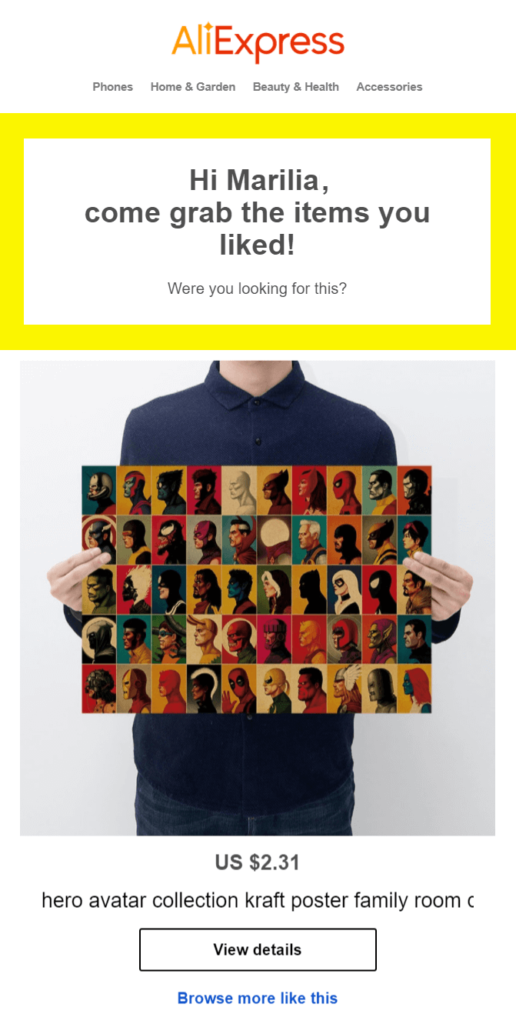
Be it a personalized welcome email or a re-engagement campaign; user data will help you create engaging emails with personalized subject lines and email content to win your audience over.
And speaking of subject lines, don’t forget you need a strong impression trigger, free of spammy worlds to get the open rates you desire. If you struggle, make sure to use a great subject line tester to give you a helping hand!
2. Leverage Contact Tags
While segmentation will help you group your new subscribers into manageable bits, sometimes you may need something more to target them more effectively. To do that, you can use contact tags or, in other words, an extra bit of information.
Contact tags can take various forms. You can assign an “opened webinar” or “downloaded ebook” tag to segment users based on their actions. Using content tags, you can easily track where they are in their customer journey and decide what to send to convert them.
Moosend, for instance, allows you to assign custom fields (a fancier name for tags) to personalize your campaigns and their email subject lines.

Leveraging tags will help you create dynamic campaigns. This means that a single campaign’s content will change based on your recipient and the info you’ve collected about them.
Using contact tags is essential; every email list management tool understands that. For that, Moosend’s platform will give you access to contact tags to help you create better, more focused email marketing campaigns that convert.
Try Moosend out to test how the contact tag system works and how it’ll help you ace your list management.
3. Filter Your Email Subscribers
Whether you have a smaller or bigger list, it is essential to know how your email subscribers interact with your campaigns. Filtering your contacts will help you understand what your audience needs and how to target it better.
Some of the most important metrics you should consider are your open rate, bounces, and click-through rates. With filtering, you will be able to target subscribers based on their behaviors.
In a nutshell, filtering your audience based on such metrics will help you:
- create specific re-engagement campaigns
- add more personalization elements
- understand your audience and its needs
Subscriber filtering can also come in handy when you create new workflows like abandoned cart emails to deliver the right message, at the right time, to the right person.
4. Maintain List Hygiene
List hygiene is the alpha and the omega of email list management. As mentioned above, keeping your lists clean will help you land your messages in your subscribers’ inboxes. Performing regular “list cleanings” will boost your sender reputation and provide you with information about your subscribers and unsubscribes.
To always keep your list clean, make sure to use the following list hygiene techniques:
- remove duplicate contacts
- remove invalid email addresses
- delete soft bounce and hard bounce emails
- update addresses with typos
Of course, according to MarketingProfs, there are more things to do to keep your list clean:
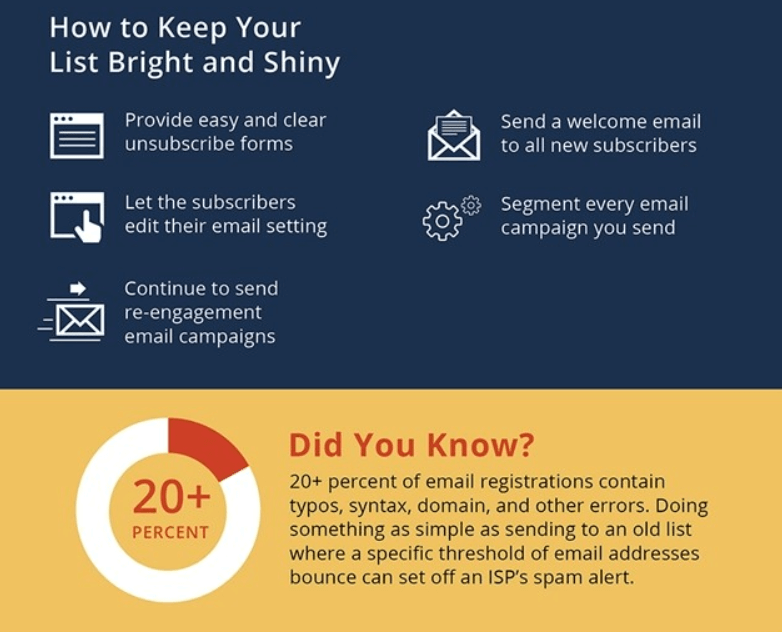
From creating friendly welcome emails to providing an easy-to-unsubscribe way, everything will help manage your email list more effectively.
5. Get Your Subscribers’ Permission
When you start building your list, you want to expand it as fast as possible. While a growing number of subscribers will be more than satisfying, you should always make sure that you have your subscribers’ permission.
For example, sending multiple campaigns to subscribers who have opted for a weekly email newsletter will lead to an unfortunate unsubscribe or, worse, getting you flagged as spam.
Whatever your goal, let your subscribers choose their preferences before emailing them to avoid harming your deliverability. Keep in mind that adding a consent form in your popups is the easiest and safest option to get their permission.
And to avoid having subscribers with invalid emails and save yourself from the trouble of having “robots” in your lists, don’t forget to use the power of the double opt-in.
Then all you need is a confirmation email like this one from Siege Media:
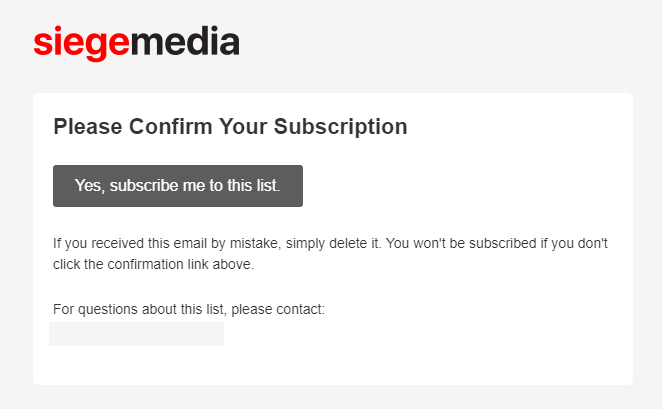
6. Re-engage Inactive Subscribers
Re-engaging your audience isn’t rocket science. Nevertheless, it requires a certain level of email copy and CTA mastery to get your dis-engaged subscribers to interact with you.
Monitoring your subscribers’ behavior will give you all the data you need to discover your inactive subscribers. And when you do, it’s time to target them with a re-engagement campaign that’ll remind them why they signed up in the first place.
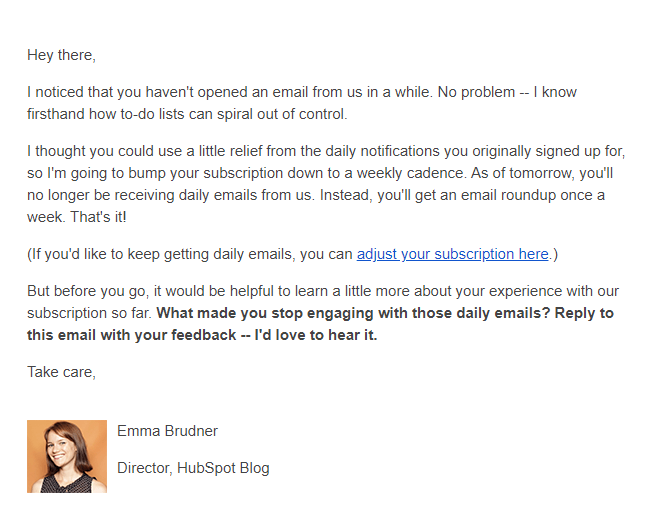
To make your re-engagement campaigns work, make sure to:
- let your subscribers know the purpose of your email
- use the appropriate tone
- add a CTA button to re-engage them anew
7. Bonus: Don’t Buy Email Lists
I’m sure that you now know what you need to do to nail your email list management. Nevertheless, there are a few more things I want you to know (or just recall).
First of all, I know that building a list is a lot of hard work. So, when someone tells you: “hey, I’ve got a list you can buy to save time,” the offer might look irresistible.
However, buying a mailing list is one of the biggest rookie mistakes you can make. Ready-made lists can harm you more as they might have invalid email addresses and an audience that has nothing to do with your product/service.
Build your list from the ground up. Trust me; you won’t regret it!
Email List Management: Achieved!
To sum everything up, if you want to nail your list management, you need the right tools for the trade.
Platforms like Moosend and ZeroBounce are perfect for keeping everything organized and, most importantly, verified! So, if you feel like it, give our platform a try and see how email management works! All you need is to register for a Moosend account and start managing your subscribers.
And as I like to say, your tools alone can’t help you achieve great results. So, make sure to read through the essential contact list management best practices and turn email list management into a piece of cake!
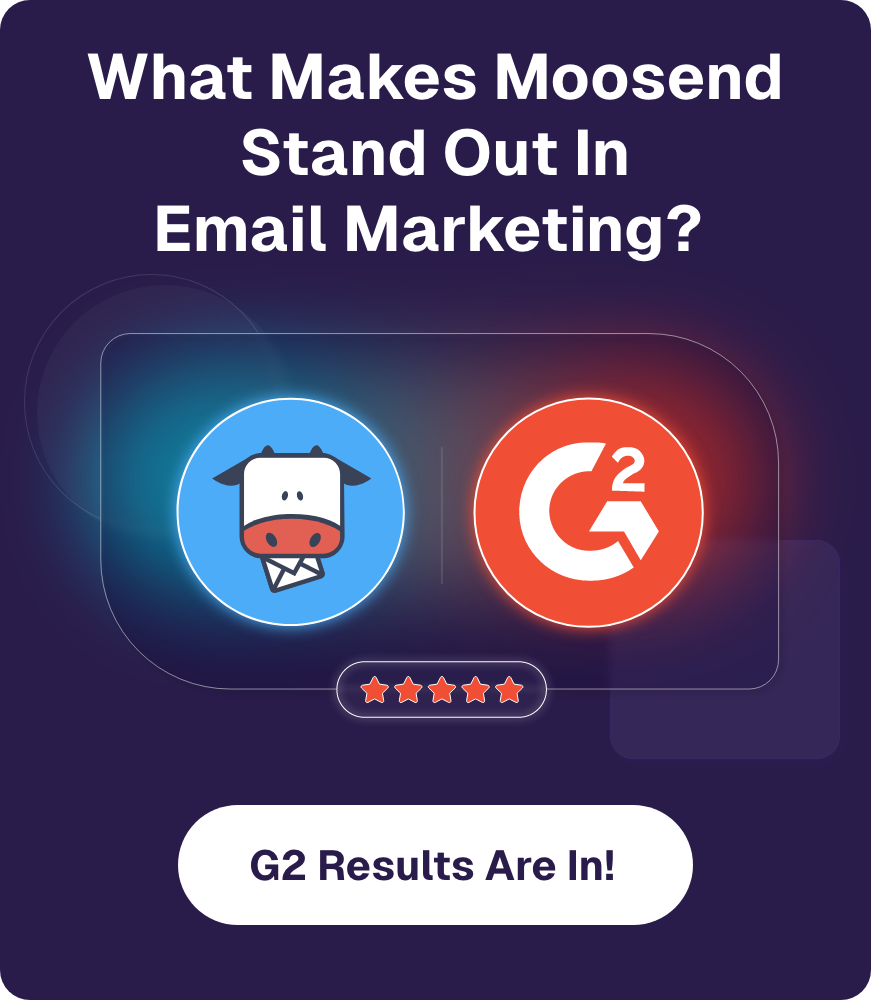


 Published by
Published by
